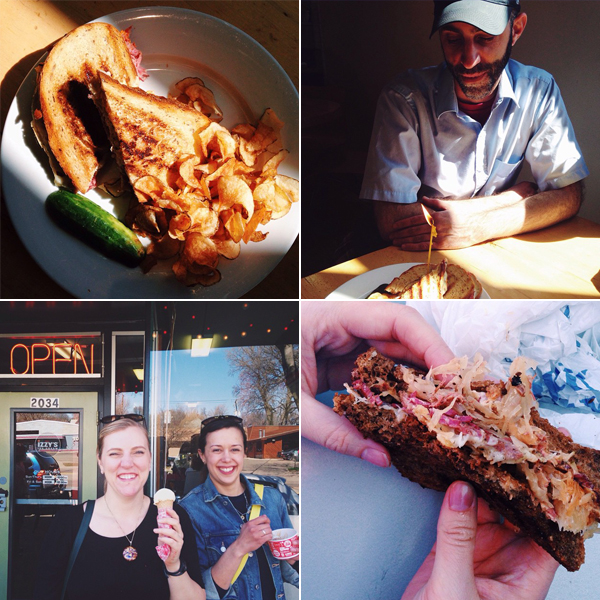 Before we opened the St. Paul Meat Shop, a group of us went on a reuben sandwich tour around the Twin Cities. It was a great bit of staff bonding and an opportunity to assess the reuben landscape. Unlike the pastrami and the chacarero, I have no emotional tie to the reuben. It’s a classic, it’s delicious, but it’s one of those sandwiches that can turn into a greasy mess of muddled flavors very easily. This was going to be a sandwich that we turned on its head a little bit.
Before we opened the St. Paul Meat Shop, a group of us went on a reuben sandwich tour around the Twin Cities. It was a great bit of staff bonding and an opportunity to assess the reuben landscape. Unlike the pastrami and the chacarero, I have no emotional tie to the reuben. It’s a classic, it’s delicious, but it’s one of those sandwiches that can turn into a greasy mess of muddled flavors very easily. This was going to be a sandwich that we turned on its head a little bit.
We’re a whole-animal butcher shop, so of course, we use every little bit of the animals we source. We wanted at least one of our sandwiches to really reinforce that message, and that sandwich turned out to be the reuben! Beef tongue is a magical cut and it seemed perfect for this sandwich because, once pickled, it is incredibly similar to corned beef. In fact, we think it’s richer and more tender than most corned beef, without all of the extra fat that comes along with brisket. Beef tongue adverse? Don’t be scared, this sandwich will help you conquer your fears!
The other big change we made to the classic reuben was serving it at room temperature. Is a reuben really a reuben if it's not served hot? You can decide that for yourself, but we love the creaminess of the unmelted raclette next to the crunch of the fermented cabbage. Textural bliss. And finally, our Russian dressing has just the right amount of sweetness to pull off the tricky balancing act of salt, acidity, and savoriness. I hope you'll give it a shot!


